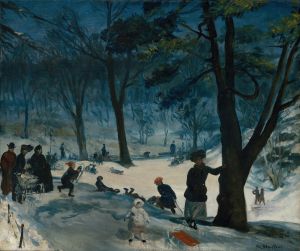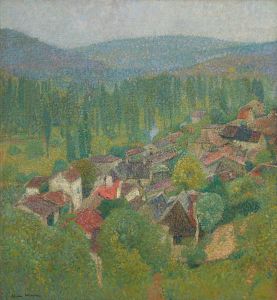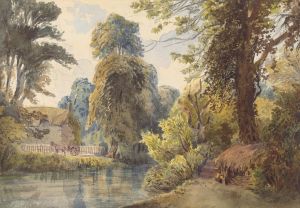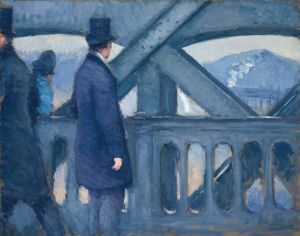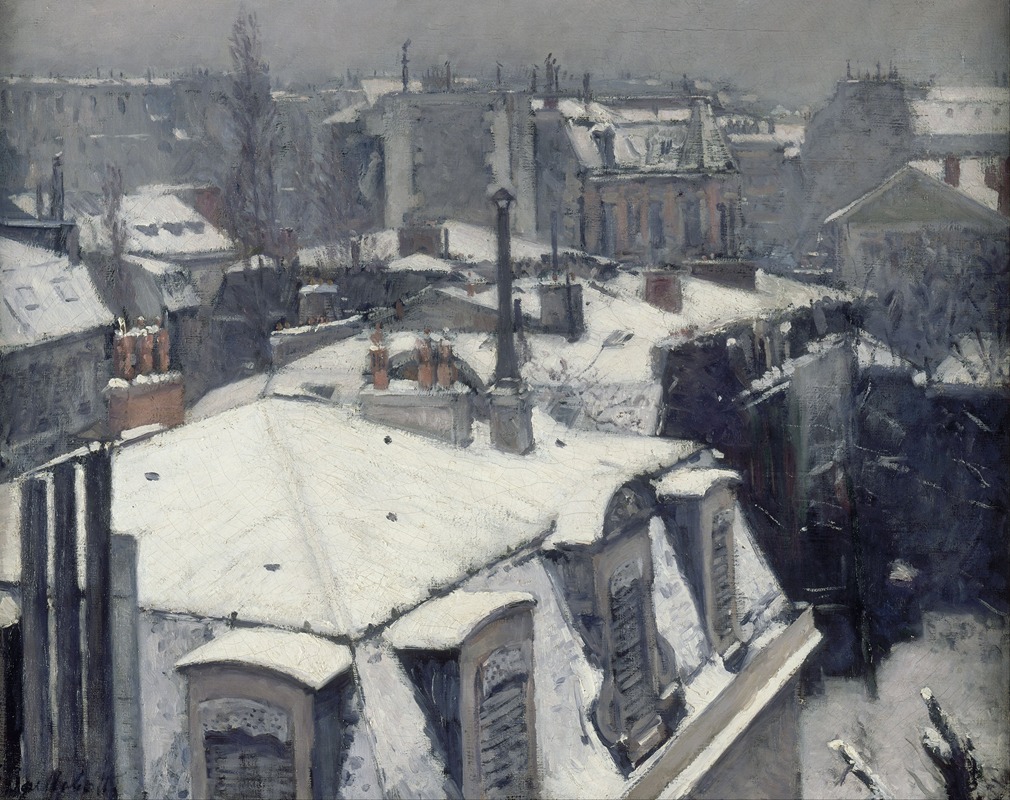
Rooftops in the Snow
A hand-painted replica of Gustave Caillebotte’s masterpiece Rooftops in the Snow, meticulously crafted by professional artists to capture the true essence of the original. Each piece is created with museum-quality canvas and rare mineral pigments, carefully painted by experienced artists with delicate brushstrokes and rich, layered colors to perfectly recreate the texture of the original artwork. Unlike machine-printed reproductions, this hand-painted version brings the painting to life, infused with the artist’s emotions and skill in every stroke. Whether for personal collection or home decoration, it instantly elevates the artistic atmosphere of any space.
Gustave Caillebotte's "Rooftops in the Snow" is a notable painting that exemplifies the artist's unique approach to capturing urban landscapes. Caillebotte, a French painter associated with the Impressionist movement, is renowned for his ability to depict scenes with a sense of realism and attention to detail that set him apart from many of his contemporaries.
"Rooftops in the Snow" was completed in 1878, a period when Caillebotte was actively participating in the Impressionist exhibitions. This painting is part of a series of works where Caillebotte explored the effects of snow on the urban environment, a subject that fascinated many artists of the time due to the way snow alters the perception of color and light.
The painting portrays a view of Parisian rooftops blanketed in snow, capturing the quiet and serene atmosphere of the city during winter. Caillebotte's composition is notable for its elevated perspective, which offers a sweeping view of the rooftops, chimneys, and the subtle variations in the snow-covered surfaces. This perspective is characteristic of Caillebotte's work, as he often employed unusual vantage points to create a sense of depth and dimension.
Caillebotte's technique in "Rooftops in the Snow" reflects his interest in realism and precision. Unlike some of his Impressionist peers who favored loose brushwork and vibrant colors, Caillebotte's approach is more restrained and meticulous. He uses a muted color palette to convey the cold, subdued atmosphere of a snowy day, with shades of gray, white, and blue dominating the canvas. The careful rendering of the snow's texture and the play of light and shadow demonstrate Caillebotte's keen observational skills and his ability to capture the nuances of the natural world.
The painting also reflects Caillebotte's interest in modern urban life, a theme that recurs throughout his oeuvre. By focusing on the rooftops, Caillebotte highlights an aspect of the city that is often overlooked, inviting viewers to appreciate the beauty in everyday scenes. This focus on the urban environment aligns with the broader goals of the Impressionist movement, which sought to depict contemporary life in all its forms.
"Rooftops in the Snow" is housed in the Musée d'Orsay in Paris, which holds a significant collection of Caillebotte's works. The painting is an important example of Caillebotte's contribution to the Impressionist movement and his ability to blend elements of realism with the Impressionist interest in light and atmosphere.
Caillebotte's work, including "Rooftops in the Snow," has gained increased recognition over the years, as art historians have come to appreciate his unique style and contributions to the development of modern art. His paintings offer a window into the life of 19th-century Paris, capturing both the beauty and the complexity of the urban landscape.
In summary, "Rooftops in the Snow" is a testament to Gustave Caillebotte's skill as a painter and his ability to find beauty in the mundane. Through his careful composition and attention to detail, Caillebotte invites viewers to see the world from a new perspective, transforming a simple scene of snow-covered rooftops into a work of art that continues to resonate with audiences today.








